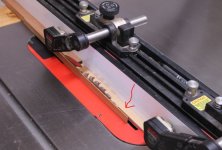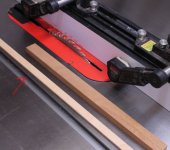[attachimg=1]
=unjcMtpMshmp6X53
Hi.
I have made and installed an emergency stop switch on my Festool CSC SYS 50.
There are still some areas that need improvement, but it works fine so I will stick with it for now.
If I had a 3D printer, I could make it even better, but unfortunately I don't.
I would like to hear more of your genius ideas, so I am sharing this tip.
Thanks
=unjcMtpMshmp6X53
Hi.
I have made and installed an emergency stop switch on my Festool CSC SYS 50.
There are still some areas that need improvement, but it works fine so I will stick with it for now.
If I had a 3D printer, I could make it even better, but unfortunately I don't.
I would like to hear more of your genius ideas, so I am sharing this tip.
Thanks



